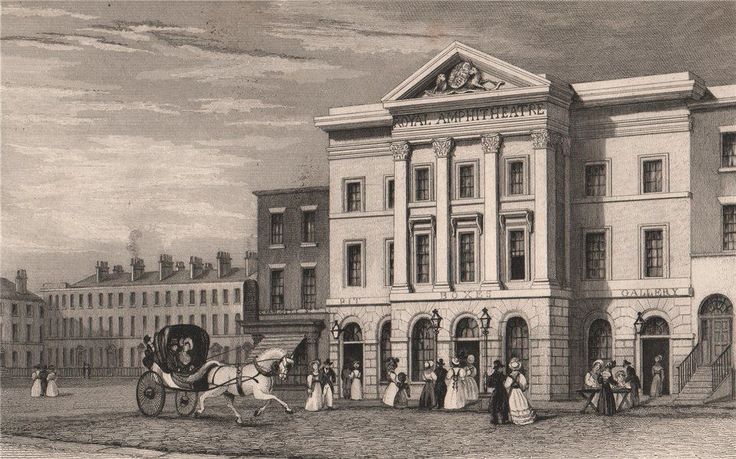CHAPTER VII. This chapter introduces George and Robert Stephenson to the story, it takes us from 1825 to 1830. Josh is still being a corn broker, but is increasingly diversifying his business. “Mr. Sanders” is actually Joseph Sandars (1785-1860) another Liverpool corn merchant. This chapter also covers the Rainhill trials, and the death of William Huskisson – the world’s first fatality caused by a passenger train. Getting the chance to invest with the Stephensons at this stage was the equivalent of investing in Apple in 1976, or Facebook in 2004.
Between 1825-26 the famous George Stephenson took up his residence in Liverpool. This most remarkable man, of whom the world was to hear so much, came there simply as principal engineer of the company formed by Mr. Sanders for constructing a railway between Liverpool and Manchester. “ It took longer at that time,” says Mr. Walmsley, ” for the Manchester manufacturers to get their cotton from Liverpool than it had done for the same bales to come from America to England. The canal company, strong in its monopoly of transit, took life easily, stored the bales on their arrival until their turn for delivery came. No remonstrance could induce them to add to their number of boats, or to increase their speed, or reduce the rate of freights.”
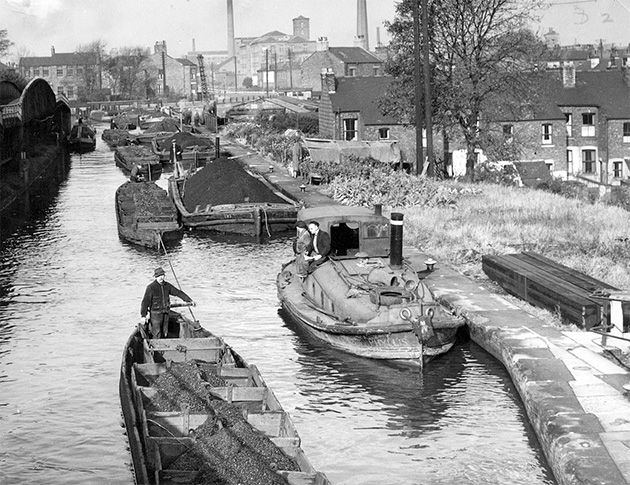
Mr. Sanders was, as Mr. Walmsley records, the first of our merchants who took up the scheme for constructing a railway between Liverpool and Manchester. Gifted with energy, foresight, and tact, he possessed in a higher degree than I ever met in any man the power of personal influence. By him the subscriptions for preliminary expenses were collected, and to him the first great experiment owed its original impulse. He never relaxed his efforts, though the scheme encountered fierce opposition, till he brought together a body of men fully competent to carry the enterprise to a successful issue. Still more valuable than his efforts to promote the railway scheme was the moral support he gave George Stephenson at the board. His firm friendship and absolute faith in him inspired them with confidence, and that the directors should believe in their engineer was the more important, for the reason of their own utter ignorance of the details of the undertaking they had embarked in. Doubts and difficulties were constantly arising, which Stephenson’s lack of education disabled him from grappling with. He had no doubts, but others must be convinced, and the difficulty he had in expressing himself so as to demonstrate to others the feasibility of a scheme that was clear to his own mind, rendered Sanders’ staunch consistent support of the utmost value.
We need do no more than refer to the various interests that leagued themselves together against the great railway innovation, or to the superstitious dread with which it was regarded by many. The best engineering capacity in the kingdom declared Mr. Stephenson’s plan for uniting Liverpool and Manchester utterly impracticable. The projected railway must cross the heaving bog of Chat Moss, run through the rock called Mount Olives, and be carried by viaducts over rivers and valleys — in short, be driven right through all that obstructed its progress. In the face of such antagonism and such difficulties it was most assuredly necessary that the directors should feel confidence in their engineer, almost amounting to blind faith.
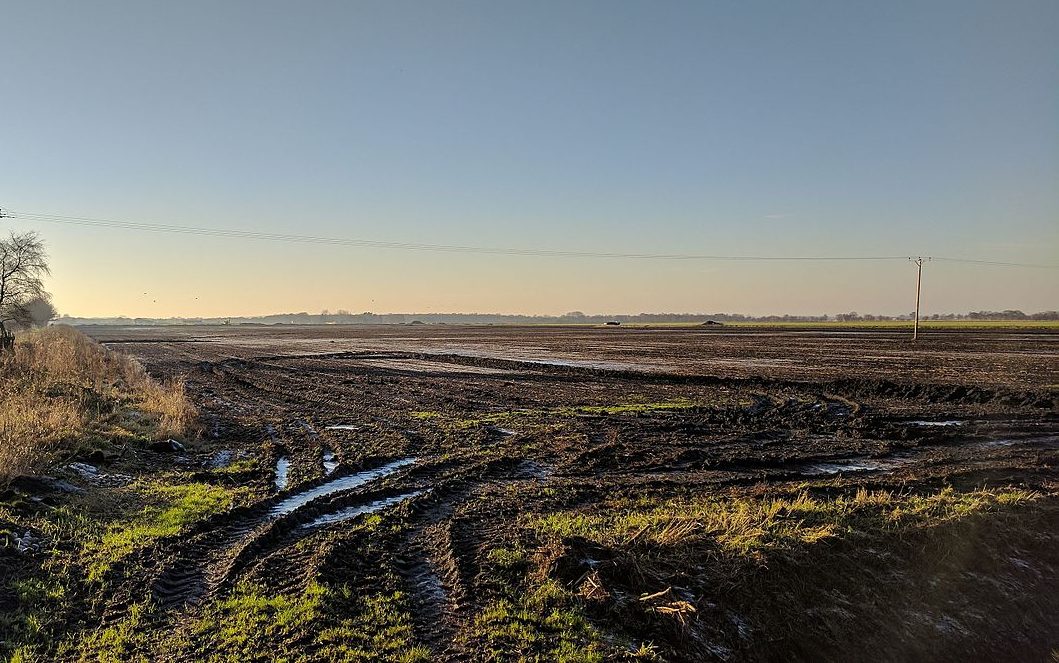
” I had frequently heard,” says Sir Joshua, “ through Mr. Sanders of this singular man, who though often at a loss how to demonstrate by argument, had a homely mode of illustration of his own, that sometimes threw a flood of light upon a tedious discussion. For example, one day the board had been divided on the question whether the train should be drawn along or propelled from behind. “
” Stephenson took a piece of white chalk, drew a line on the table, fastened a bit of twine round the ink- stand, and bade the directors try the experiment themselves, to push and then draw the bottle over the line, and judge which was the easier mode of proceeding, and which produced the least friction. The experiment was conclusive.”
” Curiosity induced me to make Mr. Stephenson’s acquaintance. At that time I shared the fears of those who regarded the railway scheme as Utopian, but I soon learnt to have entire faith in Stephenson’s genius, and better still, I learnt to love the man, to revere his truthfulness and honesty, and value his brave tender heart. A close friendship ensued ; we spent much of our time together, and I never met a truer friend, a more consistent man, or a more agreeable companion. Our lives henceforth became in a manner bound up together.” Further on Sir Joshua says : ” There was a zest about him, a rugged outspokenness, a flavour of pungent homely humour. His speech was sharp and quick, his manner often abrupt. What he said he asserted positively, laying down the law. It was the self-reliance of a man whom experience had taught to have faith in himself. Sometimes this self-reliance might degenerate into obstinacy, but it was the obstinacy of conviction, not of conceit.”
This earnestness gave a freshness and simplicity to Stephenson’s manner that inspired a feeling of mingled tenderness and reverential enthusiasm in those who knew him well. His very foibles were dear to his friends ; they were part of him, and all his ways were expressive of ,the man. Lovingly and respectfully they spoke of him as the ” old man.” ” It was delightful to hear the old man converse on subjects familiar to him,” says Sir Joshua. ” His Northumbrian burr had a sort of cadence in it. He was not a book-reading man, but Nature had kept her book open for him to read, and every line of it he had studied. Nothing escaped his keen eye out of doors. He observed everything, and his memory was extra-ordinary. What he had once seen or read he never forgot. Geological strata, differences of soil, varieties of cattle, the construction of a bird’s nest — all were taken note of, all were thought over. Even on questions relating to speculation on philosophy and theology, his words gave evidence of deep meditation.”
” Geology was the topic he most delighted in. He loved to dilate on the great age of the earth. He had his hobbies and theories, some of the latter strikingly profound. One was that trees were nourished rather through their leaves than through their roots. His theory about coal, that it contained within itself the sun’s rays, as it were preserved, has become a received fact of science.”
” On the subject of politics, he was generally reticent. He had a certain disdain for it as a hopeless confusion, void of any law that he could grasp. Philosophers and children alike found delight in listening to him ; intellects in contact with his felt the stimulus of his powerful mind, and hearts felt refreshed by the simple poetry of his. It was sincerity combined with genius that attracted men ; and as for children, Stephenson had always a hospitable knee for them.”
” It was a joyous sight,” continues Sir Joshua, ” to see the great engineer with young people. They would hold on to his hands, trot by his side, or clamber about him as he taught them. He would tell them of ‘ the birds,’ who next to them held the warmest place in his heart, ‘ flying away when the cold blast came, and coming again when the sun shone.’ Taking up the most every-day manifestations of Nature, a bit of chalk or quartz, he would, step by step, lead them upwards with the most persuasive arguments and illustrations, speaking to them of nature in a way that made it a living book to them.”
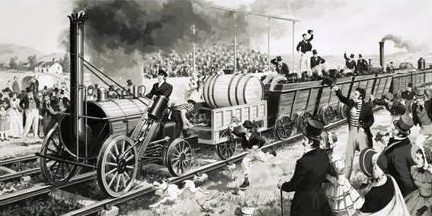
“In the early part of October, 1829,” proceeds Mr. Walmsley, “came off” the trial of the engines, competing for the prize of five hundred pounds offered by the railway directors for the best steam locomotive manufactured in England. Rainhill was the scene of the trial. A level piece of railway two miles long was to be run over backwards and forwards twenty times.
Four engines entered the lists. Mr. Erickson’s ‘Novelty’/ Mr. Hackworth’s ‘Nonpareil’/ Mr. Bustail’s ‘Perseverance’/ and Mr. Stephenson’s ‘Rocket.’
On the appointed day, crowds assembled to witness the contest. The ‘Novelty’ was the first called out. It was a beautiful piece of machinery to the eye, but false in principle, and Mr. Stephenson knew this. As he and I stood together alongside his trial engine, someone who had witnessed the performance of the ‘Novelty ‘ came up breathless from the speed at which he had run. ‘You are beaten, Stephenson,’ he shouted out, ‘there’s no chance for the “Rocket” The ” Novelty ” has surpassed all our expectations. It has run at the rate of twenty-four miles an hour.’
‘ How many carriages were attached to it ?’ asked Stephenson, quietly. ‘ None,’ was the reply.
The ‘ old man ‘ gave a low laugh, then patting his engine with confiding affection, said : ‘ Is that all? The ” Rocket ” will go thirty miles an hour, carrying a whole train behind it. ‘
When its turn came, the ‘ Rocket ‘ fulfilled its master’s expectations. The prize was won by Stephenson.”
The 15th of September, 1830, at Liverpool, saw the inauguration of a new order of things. It was a brilliant day. Flags were flying ; soldiers marching to the strains of martial music, the sun shining on their weapons and uniforms, and on the holiday garbs and gear of the crowd ; all going in the direction of the new railway, leaving the streets of Liverpool to unwonted silence and solitude. Mr. Walmsley had gone with Mr. Stephenson. They were both expected back in the afternoon, but the afternoon waned, and still no sign of the returning spectators. No tidings of the day’s events had come. Groups began to form and rumours to fly vaguely. Messengers were despatched and contradictory reports spread. Night came at last, and with it the announcement of the cruel tragedy which had inaugurated the day’s proceedings. Mr. Huskisson, the advocate in Parliament of railways, had fallen a victim to the new order of things.
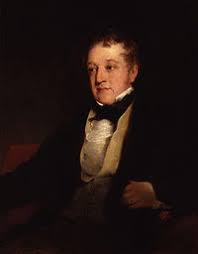
Referring to Sir Joshua’s notes, we give his account of this ill-omened tragedy.
” Huskisson was in the train, the engine of which, named the ‘ Northumbrian,’ was driven by Stephenson. The Duke of Wellington was in the state carriage. The accident occurred at Parkside, where the ‘ Northumbrian ‘ had drawn up on a line of rail. “
” Here the eight trains that formed the procession were to pass in review before the Duke. Already the ‘Phoenix,’ driven by Robert Stephenson, and the ‘ North Star ‘ had passed There was to be an interval of a few moments, and then the ‘ Rocket ‘ driven by Mr. Locke, was expected. The excitement was immense. In spite of the placards warning passengers not to quit their carriages, men found it impossible to sit still — they got out to talk. The Duke of Wellington, seeing Mr. Huskisson standing on the bank close to the line, held out his hand to him; while they were shaking hands a shout rose from the guards, and was taken up all along the line, ‘Get in, get in ! ‘ A train rushed past ; the passengers in the carriages half thrust themselves out of the windows. “
” Someone had been knocked down. The ‘ Rocket ‘ passed on, and a mangled body was dragged from off the rails. It was Mr. Huskisson. “
” The pageant, the triumph, was now turned into a funeral procession. Stephenson drove the dying man to Eccles, putting his engine to its highest speed. The Duke of Wellington and his colleagues wished to return at once, but the directors, fearing the damage that the panic would cause to the railway interest if the ‘Northumbrian’ did not get to Manchester, persuaded them to go on.”
” At Manchester, the scene was very different from that which Liverpool had presented in the morning. At Liverpool, thousands in holiday gear had cheered the departing train ; at Manchester, thousands greeted its arrival with hootings.”
” A public demonstration had been got up against the Duke of Wellington, who was at the head of that active determined Tory party opposing Parliamentary reform, and Manchester had no representative in Parliament. Brickbats and stones were flung at us. The Iron Duke bore the attack with consummate indifference, and thus the journey and inauguration closed in painful contrast with its outset.”
”Tragic as was the occasion, Stephenson could not resist a quiet thrill of satisfaction as he remarked to me, on returning to Liverpool, that the ‘Northumbrian ‘ ‘ had driven Mr. Huskisson to Eccles at the rate of forty miles an hour. Five years ago,’ he added, ‘ my own counsel thought me fit for Bedlam for asserting that steam could impel locomotives at the rate of ten miles an hour.”
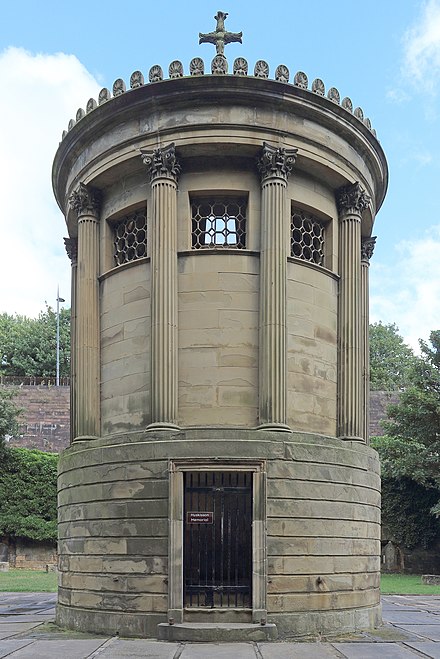
” Mr. Huskisson was buried on the 24th of September, at St. James’ Cemetery. People then remembered that when he opened the burial-ground, one short year before, he had been so impressed by the beauty of the site and the stillness of the place, that he remarked to those around him that, when his hour came, he would like this burial-ground to be his final resting-place. And there they now laid him.”
We next come to the account of an enterprise, the course of which illustrates George Stephenson’s extraordinary tenacity of purpose and Sir Joshua’s unwavering faith in him :
” When Robert Stephenson was superintending the construction of the Leicester and Swanington Railway, he came to the conclusion that coal was to be found in the Snibstone Estate, near Ashby, which was then in the market. His father concurred in his belief. A close observation of the surrounding country brought home the certainty to him that rich beds of unworked coal lay beneath the corn and turnip fields of Snibstone.”
“ Stephenson bought the estate, and then invited Mr. Sanders and me to take shares in the undertaking. We relied so implicitly on his judgment that we at once complied. The sinking began. One day Stephenson was superintending the work, when a farmer came to him :
” ‘ I thought as much, sir,’ he said, looking at the preparations made ; ‘ I thought you were after coal, but you did not know that we have tried that dodge already and failed.’ The man evidently relished the manner in which the landowner had got the better of the engineer. “
” ‘ Oh I ‘ replied Stephenson, in his deliberate way, ‘ I thought as much ; I saw your old workings away yonder. And what made you fail, mon ; what beat you?’ “
” ‘ Only a river of water, that you’ll come to/ replied the farmer, laughing.”
” ‘You’re easily beaten, mon,’ said Stephenson, pointing to some pumping-engines and a mass of cast- iron tubbing, prepared in anticipation of such an eventuality. ‘We don’t care for your river,’ he added, with a humorous twinkle in his eye and a slight increase of the burr. “
“The next time the farmer came to look at the works, he found all had come to pass as Stephenson had anticipated. The water had burst into the shaft, but it had been pumped up and beaten back by the process called ‘ tubbing,’ practised at that time in the Northumbrian mines only.”
” So far Stephenson was victorious, but a greater difficulty was ahead; one that it was impossible to have foreseen, and which most men would have considered insuperable. A bed of green-stone, hard as granite, of unknown thickness, ran right through the land that the shaft now pierced. The contiguity of the estate to the Forest Rocks rendered this obstacle all the more serious, in that its thickness could not be estimated. Stephenson examined the unlooked-for obstacle, declared that it was but an overlap of green- stone, and persisted in asserting that coal lay below.”
” They set to work again — Stephenson confidently, and I with unshaken faith in him. Mr, Sanders in this instance did not share my fait. The process of boring was distressingly slow. Only a few inches could be pierced through daily. Sanders loudly protested, declaring the enterprise foolhardy. Stephenson was hurt. He could not demonstrate the existence of coal, he could only reiterate his assertion that it was there. With almost childish petulance he would entreat me not to allow Sanders to write to him; repeating, in his letter to me, ‘ That coal is there, on one side, coming close up to the Forest Rocks, and extending in the opposite direction. This obstruction is but an overlap of stone. Success will come if we will but persevere.’ Desirous of letting the ‘old man ‘ work on, unshackled by criticism, I offered at this crisis to buy up Mr. Sanders’ share. This offer testifying my confidence in the enterprise, removed his doubts, and he declined to sell out. Stephenson never forgot the reliance I showed him on this occasion. For many months we still bored on, without coming to coal. I confess the sight of the cold green- stone sometimes chilled my heart. “
Then I would ask : ‘Well, George, do you think you will ever come to coal?’
” ‘ I’ve no doubt of overcoming all difficulties,’ the ‘ old man ‘ would answer, with such quiet confidence that all my doubts would vanish. After nine or ten months the reward came, the green-stone was pierced through and a rich bed of coal was found beneath. “
” Another curious incident belongs to this story of the Snibstone mine. The original purchase had only included some seven hundred acres of land. Stephenson asserted that a coal bed extended over at least six hundred acres more. Just as the agreement to work the main seam was being completed, it struck Stephenson that other beds besides the main seam might exist
” ‘ What if such prove the case ? ‘ he asked the owner.
” ‘ Pay for the main seam, which you know exists, and you are welcome to all you find besides,’ said the landlord.
” ‘ Have you any objection to insert this in the agreement?’ asked Stephenson.
” ‘ Not in the least ! ’ replied the landlord, laughing, ‘and I’ll only ask from you a peppercorn rent for ninety-nine years.’ “
” This was done, and subsequently fourteen seams of coal were found, which under the agreement became the property of the partners.”
There is a portrait of Mr. Stephenson in the collection bequeathed by Sir Joshua Walmsley to the South Kensington Museum. It was taken some years after their first acquaintance by Mr. Daniel, an artist from whom Sir Joshua expected great things.
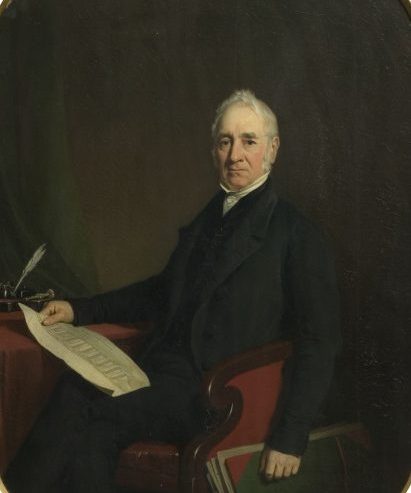
It represents a spare elderly man sitting very upright, as was Stephenson’s wont — active, observant, shrewd. It is a kindly face, guileless, yet with rare acuteness stamped upon it. Friends smile when they look upon it, for it is the faithful representation of the great and simple man they loved, who in age and success never lost the quiet zest for natural things he imbibed in the unconventional life of his childhood and youth.
